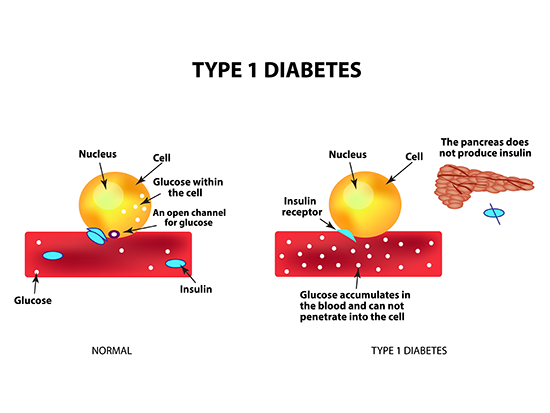Researchers have discovered the novel mechanism that underlies a previously reported observation that infection by group A Streptococcus bacteria reduces the risk of later developing Type 1 diabetes.
The Journal of Immunology reports that vaccination of neonatal mice with group A Streptococcus promoted a clonal expansion of innate-like B cells that produce antibody against N-acetyl-D-glucosamine, or GlcNAc. GlcNAc is a derivative of glucose sugar that is found as part of the cell wall of group A Streptococci and as part of antigens on the insulin-producing pancreatic beta cells that are formed by GlcNAc posttranslational modifications.
The University of Alabama at Birmingham researchers showed that the associations of reduced Type 1 diabetes risk after group A Streptococcus infection was dependent on these GlcNAc-specific B-1 B cells. B-1 cells in mice are a type of B cell that produces natural antibodies, which are antibodies produced without infection. Such natural antibodies can aid in producing tolerance, the process where the immune system learns to tolerate — not attack — its own tissues.
This finding of the role for B-1 B cells “demonstrates the potential for targeting the natural antibody repertoire in considering therapeutic strategies for Type 1 diabetes,” said John Kearney, Ph.D., a professor in the UAB Department of Microbiology, who led the study.
Autoimmune diseases like Type 1 diabetes are a failure to maintain tolerance. In Type 1 diabetes, the immune system attacks and specifically destroys the insulin-producing beta cells in the pancreas. Insulin is the hormone that helps cells use glucose for energy. The loss of insulin production after death of beta cells creates damaging high levels of glucose in the blood that can lead to disabilities, including blindness, heart disease and kidney failure.
Similar to the findings of others, the UAB researchers first showed immunization of neonatal mice at 14 days of age with dead or living group A Streptococcus protected them from Type 1 diabetes, as compared to controls. In contrast, adult immunization of this mouse strain, which is prone to develop diabetes, failed to protect, so timing was central to protection.
At 10 to 12 weeks of age, the naïve mice with diabetes had significant B and T cell infiltration into the pancreas and a breakdown of the membrane around the pancreatic islets that contain beta cells. The mice that were neonatally immunized did not show those pathological changes.
The neonatally immunized mice produced immunoglobulin M, or IgM, that bound to both group A carbohydrate and GlcNAc, and the mice also showed a clonal expansion of otherwise low frequency group A carbohydrate-reactive B-1b B cell clonotypes.
The UAB researchers created group A carbohydrate-reactive monoclonal antibodies to probe possible targets of the IgM antibodies, and they found that the monoclonal antibodies recognized insulin secretory granule-associated GlcNAc antigen portions, known as epitopes, on pancreatic beta cells. These group A carbohydrate-reactive monoclonal antibodies had robust reactivity for both human and mouse pancreatic islets.
These epitopes appeared to be generated during autophagosomal degradation of mature carbohydrates, one of the steps of apoptosis, or the programmed cell death, of beta cells. Experiments showed that the GlcNAc-reactive B cell response to group A streptococci appeared to delay Type 1 diabetes, potentially by facilitating efficient clearance of apoptotic beta cells, thereby limiting activation of killer and helper T cells that ultimately would destroy healthy beta cells. Indeed, ex vivo experiments showed that binding of group A carbohydrate-reactive monoclonal antibodies to pancreatic islet cells inhibited T cell activation.

